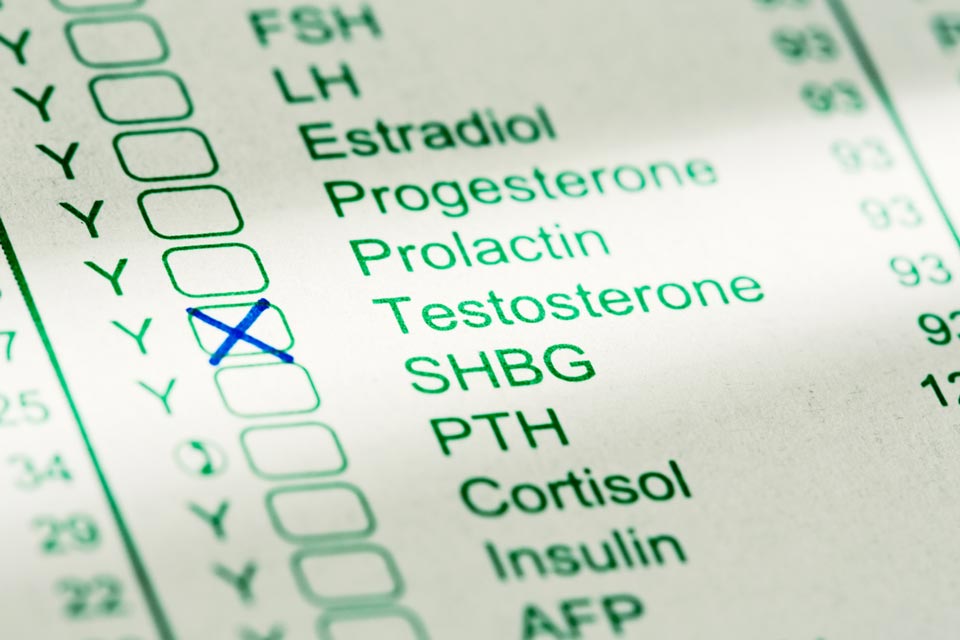Factors that Block or Promote DHT

Not all the testosterone circulating in the blood is available to convert to DHT. Molecules that bind or otherwise use testosterone block this DHT conversion. Conversely, decreased levels of these molecules can lead to increased availability of free (unbound) testosterone and DHT.(30, 84)
For example, aromatase enzymes in women affect DHT levels because aromatase converts free testosterone to estrogen instead of DHT.Certain drugs used to treat breast cancer as well as cigarette smoke block aromatase, and are also linked to hair loss—possibly due to lower in aromatase enzyme levels. In women this may be reflected in lower estrogen to free testosterone ratios, which are believed to have an impact on female pattern hair loss.(30, 32, 71, 85)
Another factor that reduces free testosterone is sex hormone binding globulin (SHBG). SHGB is a protein produced in the liver and is used to transport testosterone. Increased insulin levels inhibits the production of SHGB by the liver while stimulating excess androgen production by the ovaries.(30, 86)
In women 80% of circulating testosterone is bound to SHBG; in men about 50%. SHBG levels can drop due to certain health conditions affecting both men and women such as obesity, hypothyroidism, Cushing's syndrome, and diabetes. Another health disorder that can lower SHBG levels in women is polycystic ovary syndrome (PCOS).(30, 84, 86)
Lower SHBG levels leave more free testosterone available for conversion to DHT. This increases the risk of androgenetic hair loss in men and women with these health conditions. Estrogen hormones, thyroid hormone, and pregnancy all increase SHGB levels—potentially decreasing DHT and having the opposite effect.(30, 84, 86)
Why Is the 5-Alpha-Reductase Enzyme Important?
The enzyme 5-alpha-reductase is crucial to the conversion of testosterone to DHT—so much so that men who have a genetic deficiency in this enzyme have female hair patterns and very little beard and mustache facial hair. There are two forms of 5α-reductase—types 1 and 2—both of which convert testosterone to DHT. However, research indicates that type 2 5α-reductase is the form of the enzyme most active in the scalp.(3, 81)
Caucasians as an ethnic group have more scalp hair, experience greater rates of male AGA than those of Asian and African descent, and also have correspondingly higher levels of androgens that convert to DHT with the help of the 5-alpha-reductase enzyme. Further evidence supporting the importance of the conversion of testosterone to DHT in balding comes from studies which show drugs that inhibit the 5α-reductase enzyme have anti-balding effects.(2, 3, 19, 81)

